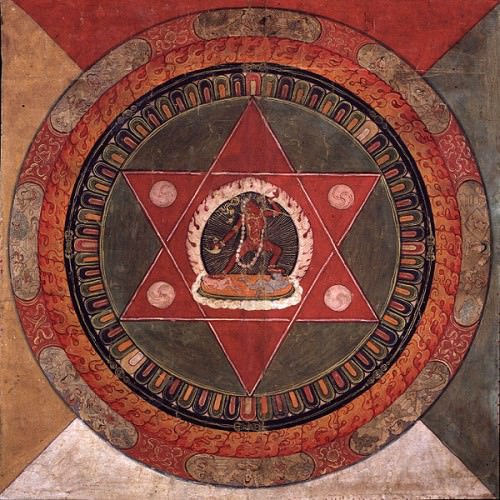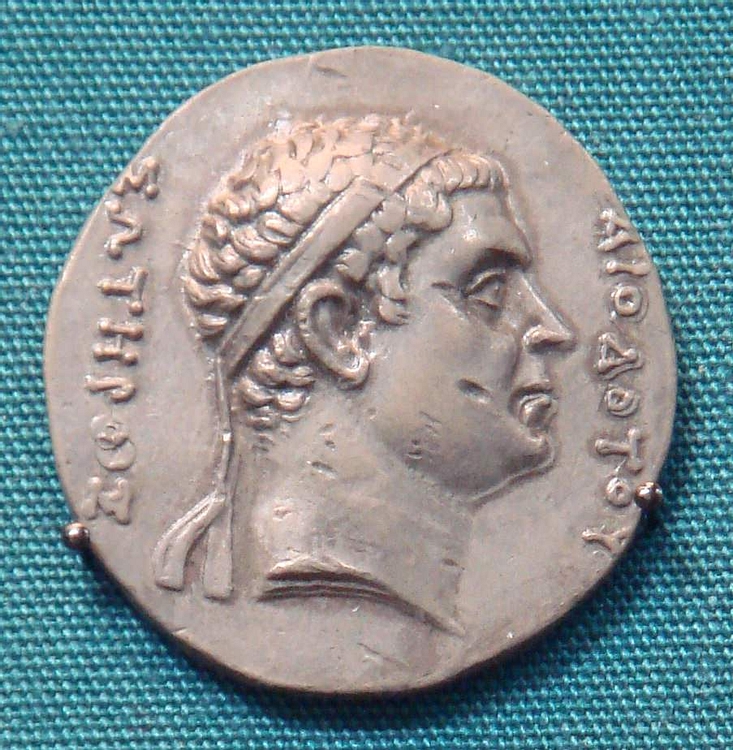Mandala › Diotid Dynasty » Ancient origins
Articles and Definitions › Contents
- Mandala › Antique Origins
- Diotid Dynasty › Ancient History
Ancient civilizations › Historical and archaeological sites
Mandala › Antique Origins
Definition and Origins

The word mandala is a Sanskrit term that means “circle” or “discoid object”. A mandala can be defined in two ways: externally as a schematic visual representation of the universe and internally as a guide for several psychophysical practices that take place in many Asian traditions, including meditation.
Mandalas are objects of devotion in Tantric Hindu and in Tantric Buddhism (Vajrayana Buddhism) and they are also used in Jainism. They can be painted on paper, wood, stone, cloth or even on a wall. In some traditions, they can be reproduced in ephemeral material such as butter or coloured sand. In some traditons like Tibetan Buddhism, the role of mandalas is so strong that it could become an architectural structure and even whole temples may be built as giant mandalas.
Mandalas are objects of devotion in Tantric Hindu and in Tantric Buddhism (Vajrayana Buddhism) and they are also used in Jainism. They can be painted on paper, wood, stone, cloth or even on a wall. In some traditions, they can be reproduced in ephemeral material such as butter or coloured sand. In some traditons like Tibetan Buddhism, the role of mandalas is so strong that it could become an architectural structure and even whole temples may be built as giant mandalas.
The methods used in creating mandalas are very precise and merged with different rituals including the chantings of sacred formulas. Mandalas may be based on or include a variety of geometric shapes using patterns that have evolved from different symbols.
IN THE CENTRE OF THE MANDALA LIES THE PALACE, WHICH HAS FOUR GATES ORIENTED TO THE FOUR QUARTERS OF THE WORLD.
SYMBOLOGY OF MANDALAS
Sometimes mandalas are associated with a symbolic palace. In the centre of the mandala lies the palace, which has four gates oriented to the four quarters of the world and is located within several layers of circles that form a protective barrier around it. Each layer symbolizes a quality (eg purity, devotion) that one must obtain before accessing the palace. Depending on the tradition it belongs to, inside the palace the mandala has symbols associated with different deities or cultural symbols such as a thunderbolt (symbol of the male), a bell (symbol of the female), a wheel (symbol of the Buddhist Eightfold Path) or a diamond (symbol of a clear mind) among others.
On other occasions, mandalas can represent a particular deity or even a group of deities (which could number a few or even thousands). In these cases the deity or main deity is placed at the centre of the mandala, while other deities are placed around the central image. The main deity is considered the generative force of the mandala and the secondary deities are seen as manifestations of the power of the core image.

Tibetan Mandala
USES OF MANDALAS
In the many traditions where mandalas are used, there are different rites where the practitioner, at least metaphorically, establishes a dialogue with the symbol or deity at the core of the mandala by moving progressively from the outside towards the centre. Once within the centre, the practitioner connects with the central symbol or deity and he or she is able to perceive all manifestations as part of a single underlying whole and gets closer to the goal of enlightenment or perfect understanding.
The Vajrayana Buddhist school (Tantric Buddhism), has a very complex set of rituals. In order to help the disciples to gain enlightenment, they use a wide range of physical disciplines and tools including mandalas. This school believes that achieving enlightenment by traditional methods requires a very long time, even many lifetimes, while the methods used in Vajrayana can deliver the same result in just a single lifetime.
Diotid Dynasty › Ancient History
Definition and Origins

Diodotos was first the Seleucid satrap of Bactria, but soon rebelled against the Seleucid ruler Antiochos II, taking advantage of the war between the Seleucid and Ptolemaic empires. He fought against the Seleucids and the Parni/Parthians, but his son allied with the latter. The dynasty ended with the overthrow of Diodotos II by Euthydemos who founded his own Euthydemiddynasty.
LICENSE:
Article based on information obtained from these sources:with permission from the Website Ancient History Encyclopedia
Content is available under License Creative Commons: Attribution-NonCommercial-ShareAlike 3.0 Unported. CC-BY-NC-SA License